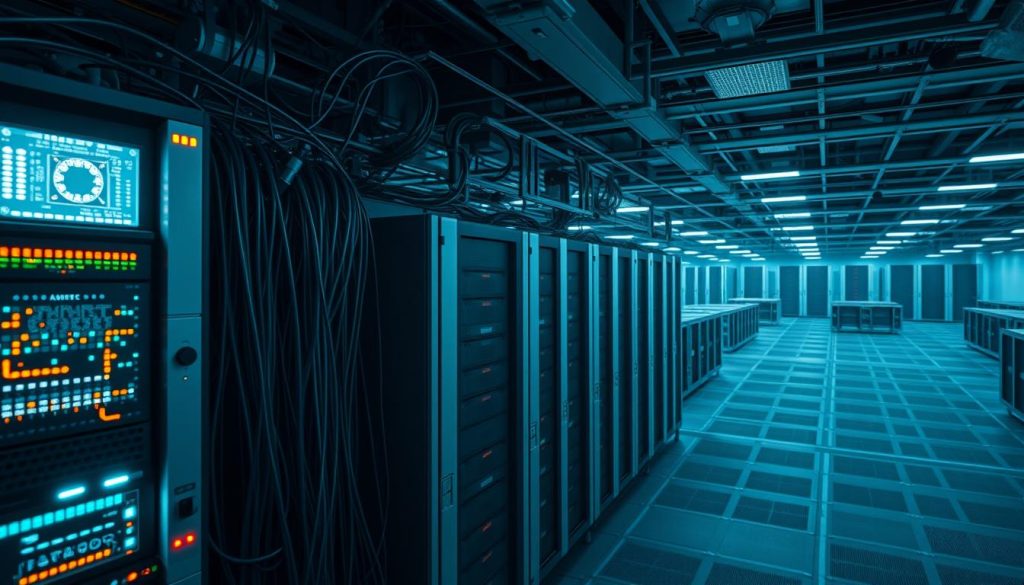Quick overview: France anchors research policy in the Ministry for Higher Education, Scientific Research and Innovation (MESRI). This central role matters for universities, grandes écoles, national institutes and the wider research community.
The Research Code (2004) gathers rules on organization, staffing, and activities across the field. It makes governance clearer and helps institutions plan long-term investments and data stewardship.
The 2013 law on higher education and research strengthened mobility, protected basic science, and boosted international outreach. Those changes align national aims with global collaboration and open information flows.
Two national strategies guide priorities: the National Research Strategy (2015), focused on societal challenges, and the National Strategy for Research Infrastructures, which highlights key infrastructures and stresses data accessibility for the community.
Table of Contents
Key Takeaways
- MESRI sets policy that shapes institutions and researchers.
- The Research Code unifies rules for the research sector.
- The 2013 law boosts mobility and international cooperation.
- National strategies steer priorities and open data access.
- This guide links statutes to practical outcomes for planning.
Ultimate Guide overview: today’s legal framework shaping France’s institutions and systems
This guide traces how statutes and policy become everyday practice in France’s research institutions.
We show a clear approach: start with the law, then follow governance to practical outcomes. The text links the Research Code and Law No. 2013-660 to what universities and labs must do day to day.
The National Research Strategy (2015) turns societal priorities into funding and research paths. That alignment improves information flows and helps teams focus on priority topics across every field.
At EU level, TFEU Articles 196 and 214 and Decision No 1313/2013/EU shape cross-border civil protection. This overview explains where national systems meet EU decisions and how member states coordinate preparedness and response.
Finally, we introduce the operational layer: units, networks, and services that make the rules tangible. Each section follows a friendly, step-by-step view so you always know what is coming next and how pieces connect.
National research governance in France: laws, regulation, and strategic development
France connects laws, councils, and strategy to provide predictable direction for research.
The Research Code (2004) consolidates rules that shape the functioning of universities, grandes écoles, national institutes, and staff.
It covers tasks, organization, staffing, activities, and daily operation across the research field.
Key dates and their impact
The orientation law of 1982 and the programming law of 1985 set early governance and funding cycles.
The 2013 higher education and research law strengthened international outreach, safeguarded basic research, and boosted mobility for researchers and teachers.
Strategies that steer priorities
The National Research Strategy (2015) turns ten societal challenges into funded priorities and concrete measures.
Decisions from ministries and national councils align resources so teams and agencies know evaluation and planning cycles.
Infrastructure and data impact
The infrastructure strategy lists 95 facilities (international bodies, very large platforms, research infrastructures and projects).
This structure improves data production, curation, and open access for the community, linking strategy to lab-level programs.

Operational structures in the French research system: roles, actors, and rules
France’s operational research structures organize teams and resources so projects scale across institutions. SORs act as the backbone: set by Decision No. 920520SOSI (July 24, 1992), they pool financial, material, and human resources and attach to major actors such as CNRS, IRD, INSERM, and INRAE.
SORs and their organization: pooling resources for scientific programs
SORs standardize project setup and the rules for shared management. These rules make setup predictable and reduce duplication across institutions. Use a SOR when you need joint budgeting and long-term shared infrastructure.
Research Units and labels: UMR, UMI, USC, URA, USR, UPR
Research units come in several types. UMRs run on a four-year label cycle after joint assessment by the Ministry and a major research body. UMIs allow true international partnerships. Choose a UMR for stable national ties, a UMI for international reach, or a USC/URA/USR/UPR for specific in-house needs. This ensures accountability and continuity under the second decision on labels.
Distributed Research Structures and networks
SFRs coordinate work via FED, FR, or IFR labels (ministerial or joint labels). GDR networks align tools and information across a research field, while FREs serve as short-term, agile groups to ease transitions.
SOSs for support and services: UMS, UPS, and GDS in practice
Operational Service Structures (Decision No. 159-87) — UPS, UMS, GDS — deliver platforms, manage data flows, and improve daily management. Pick SOSs when technical services or shared platforms are central to project management.
Practical tip: match the structure to project scope: use SORs for pooled resources, UMI for international partnerships, and SOSs when technical service and data pipelines matter most.
The EU civil protection legal framework and France: cooperation, response, and protection
Treaty provisions in the TFEU define how the Union and member states set expectations for disaster prevention, assistance, and cross-border help. Article 196 drives cooperation inside the EU, while Article 214 covers aid to third countries.

TFEU basis and the Union Civil Protection Mechanism
The Union Civil Protection Mechanism is anchored in Decision No 1313/2013/EU and later amending decision updates. These steps expanded rescEU capacities and improved coordination for quick deployment.
Implementing rules and practical measures
Implementing acts set detailed rules for rescEU stockpiles, medical supplies, CBRN measures, transport, shelter, and logistics. Data‑driven triggers now speed mobilization and keep quality standards consistent in the field.
Policy direction, information sharing, and host nation support
Council conclusions and EP resolutions add policy guidance that complements binding acts. Guidelines on host nation support, risk mapping, and reporting help reception points, customs, and logistics hubs operate smoothly.
In practice: the Knowledge Network and reporting rules strengthen information flow and after‑action learning. That link between EU measures and national actors improves France’s readiness and the overall functioning of the community response system.
Council of Europe view on AI: towards a comprehensive legal framework for digital technologies
The Council places human rights, democracy, and the rule of law at the core of its view on AI. This north star guides choices on design, deployment, and oversight across member states.
Scope and approach: the Council recommends a contextual, risk-based approach so public authorities and companies can scale safeguards to real-world harms. That means higher scrutiny for systems affecting health, elections, or fundamental rights.
Opportunities and risks: AI can boost research, education, and service development, but it also raises clear risks — bias, opacity, and systemic harms. A calibrated approach helps balance innovation with protection.
Mapping instruments: existing tools—data protection rules, cybercrime measures, algorithmic system guidance, justice standards, and education policies—are reviewed to close gaps and align practice across sectors.
Regulatory options range from modernizing binding treaties, to adopting a new convention, to issuing non-binding guidelines and best practices. Effective follow-up needs compliance tools, audits, and clear decisions by Council bodies so national regulators can adapt.
Observation, information, and data systems: structures for long-term assessment and management
Stable observation platforms link instruments, people, and procedures to deliver reliable data over decades. They make assessment and planning possible across environmental fields. These systems support both everyday science and high‑stakes decision making.
Earth Science and Astronomy Observatories (OSUs) are anchored by Decree No. 85-657 (June 27, 1985) and the Education Code (Articles D713-9 to D713-11). That status gives continuity to services for the national and international community. OSUs also offer training and foster international cooperation, including oceanography programs that protect marine environments.

National monitoring services and themes
CNRS/INSU‑labeled SNOs (Framework Memorandum, Jan 13, 2016) produce long-term observation across AA, OA, SIC, and TS themes. These initiatives generate consistent streams that feed climate, ocean, and solid‑earth research. Reliable records make scientific replication and policy assessment possible.
SOERE networks and durable processing
SOERE networks, coordinated by AllEnvi, bind sites to common protocols. They standardize measurements, share platforms, and ensure robust data processing and storage. Durable lifecycles—collection, curation, and access—are central to reproducible results and European recognition.
« Clear labeling and transparent decision paths keep participation criteria focused on quality and long-term value. »
In practice, these observatories and networks align resources, reduce duplication, and support student education and community services. That mix of research and training turns raw readings into actionable information for managers and scientists across France.
Research alliances and cooperation: coordination, innovation, and the role of actors
National research alliances act as linchpins that bring institutions together to tackle shared priorities. These alliances were created in 2009–2010 to align thematic programs with the National Research Strategy. They pool expertise, speed development, and guide decision paths across the research community in France.
AllEnvi, ANCRE, AVIESAN, ATHENA, ALLISTENE: strengthening thematic programs
AllEnvi structures environmental programs by linking labs, agencies, and industry. This approach accelerates applied innovation on climate, biodiversity, and resource management.
ANCRE focuses on energy. It combines R&D agendas with industrial partners to build clear roadmaps and high‑impact projects.
AVIESAN integrates life sciences and health. It fosters transdisciplinary partnerships from hospitals to national institutes to improve research translation.
ATHENA creates forums for social sciences. It helps researchers inform policy and support evidence‑based decision making.
ALLISTENE leads in digital sciences. It builds innovation ecosystems that bridge public research and private sector needs.
Partnerships among institutions, councils, and industry: improving functioning and impact
The alliances rely on founding members, council advice, and clear decision channels to stay responsive and accountable. Practical partnership models include joint calls, shared infrastructures, and program offices.
| Alliance | Main focus | Core members | Typical instruments |
|---|---|---|---|
| AllEnvi | Environment | CNRS, IFREMER, INRA, Météo‑France | Joint programs, lab‑industry projects |
| ANCRE | Energy | CEA, CNRS, IFPEN | Roadmaps, industrial partnerships |
| AVIESAN | Life sciences & health | INSERM, Institut Pasteur, CNRS | Clinical links, translational platforms |
| ATHENA | Human & social sciences | CNRS, INED, universities | Policy forums, thematic networks |
| ALLISTENE | Digital sciences | Academic & industry partners | Innovation clusters, shared labs |
« Alliances convert strategy into work plans that deliver measurable impact across sectors. »
How rules translate into practice: measures, management, and response across fields
Concrete steps are needed so decisions become measurable operations in the field. Guidelines set the minimum quality baselines and Implementing Decisions define technical targets—for example, medical team requirements, CBRN kits, and stockpile standards.

From guidelines to implementation: decisions, regulation, and quality standards
Guidelines (EU Host Nation Support, Risk Assessment and Mapping, Reporting Guidelines) turn broad aims into clear specs for procurement, training, and exercises. Decisions issued between 2019 and 2022 then tightened those specs to upgrade readiness.
Management routines—planning, procurement, training cycles, and drills—keep services aligned with evolving risks. After‑action reviews feed updates so teams improve every cycle.
Host nation support, disaster risk management, and cross-border cooperation
Host nation support reduces friction at borders and logistics hubs. Faster reception and transit cut delays and make cross‑border assistance more reliable.
Standardized assessment templates and regular reporting let coordination bodies compare events and learn across sectors. National structures (SOR, SOS, OSU, SNO, SOERE) provide the data pipelines and service platforms needed for compliance and auditability.
« Clear, routine assessment and feedback keep response quality consistent and traceable. »
| Area | What rules require | How to implement |
|---|---|---|
| Medical teams | Type 3 EMT standards (equipment, training, staffing) | Procurement specs, certification drills, readiness checks |
| CBRN response | Specialized kits and decontamination protocols | Targeted training, stock rotation, interagency exercises |
| Logistics & transit | Reception, transit, hub coordination (Host Nation Support) | Standard templates, customs pre-clearance, staging plans |
In practice, aligning guidance, decisions, and management routines creates measurable measures that improve speed and quality of response. A culture of feedback ensures the next decision builds on lessons learned.
Current challenges and future development: risks, innovation, and the impact of digital technologies
Rapid technological change and complex risks require adaptive systems that learn quickly.
Balancing protection and innovation is a key test. Authorities must set clear criteria to assess impact and to scale safeguards in proportion to harm. This keeps teams safe while letting pilots and new tools prove value.
Balancing protection and innovation: assessing impact and updating measures
Good practice pairs fast trials with firm evaluation metrics. Use pilot phases, measurable indicators, and staged rollouts to reduce operational risks and speed useful development.
Amending decisions and adaptive governance: keeping pace with technology and data
Shorter decision cycles matter. The EU updated the UCPM via Decision (EU) 2019/420, Regulation (EU) 2021/836, and Decision (EU) 2023/2671; these show why amending decision rounds keep capacities current.
Adaptive governance links research outputs to procurement, training, and standards. A clear pathway—from lab pilots to standard tools—helps avoid supply chain fragility and better handles compound disasters.
« Coordinated updates across EU and national levels make new capabilities operational and auditable. »
| Challenge | Response | Role |
|---|---|---|
| Supply chain fragility | Redundant sourcing and stock rotation | Procurement & logistics |
| Emerging tech risks | Pilots, impact metrics, staged adoption | Researchers & operators |
| Data-driven ops | Roadmaps, training, standard updates | Policy makers & trainers |
In practice, aligning EU updates with national plans and the SNR helps fast-track useful tools while controlling new risks. For more on the underlying legal context, see the linked guide.
Overall, the view ahead is collaborative: regulators, researchers, and operators must sync incentives and timelines to turn innovation into resilient practice.
Conclusion
This guide draws together key dates, decisions, and institutions to show how rules become action across French research and protection systems.
Conclusions point to a clear view: the Research Code, Law No. 2013-660, and the National Research Strategy shape how institutions and actors perform in the field. SORs, SOSs, unit labels, alliances, and observatories are practical parts that keep systems functioning and agile.
EU decisions (TFEU Articles 196/214, Decision 1313/2013/EU) and Council work complement national law to improve protection and cooperation. Assessment and information practices link measures to results across every part.
Takeaway: see yourself as part of the system. Use these conclusions to guide planning, partnerships, education, and innovation so the whole network keeps delivering real‑world support and trust.
FAQ
What does "Understanding the legal framework in France" cover?
This section explains how laws and key regulations shape France’s institutions and their systems. It highlights scope, objectives, and how statutes influence education, research bodies, and public services.
What is the ultimate guide overview about today’s legal framework shaping France’s institutions and systems?
The overview summarizes current rules, governance models, and instruments used by state and regional actors. It points to recent reforms, institutional roles, and the interaction between national policies and EU-level measures.
How is national research governance in France organized?
Governance rests on a mix of statutes, ministerial decrees, and strategic plans. It defines responsibilities for universities, research organizations, and funding bodies while setting priorities for national strategy and infrastructure.
What is the Research Code and what institutions does it affect?
The Research Code outlines the scope and objectives for public research, including the roles of universities, CNRS, INSERM, and other bodies. It sets standards for ethics, funding, and institutional cooperation.
Which key laws shaped French research in recent decades?
Major milestones include the 1982 orientation law, the 1985 programming law, and the 2013 higher education and research law. These acts guided governance, funding, and the modern structuring of research organizations.
What are the main priorities in France’s National Research Strategy?
Priorities include boosting excellence, fostering interdisciplinary projects, strengthening infrastructure, supporting innovation, and addressing societal challenges like health and climate.
How do research infrastructure strategies affect data management?
Strategies determine types of facilities, governance models, and standards for data collection, processing, sharing, and long-term preservation, improving reuse and cross-disciplinary access.
What are SORs and how are they organized?
SORs are shared operational resources that pool staff, equipment, and expertise for scientific programs. They often operate under joint arrangements between universities and national research organizations to optimize costs and services.
What research unit labels exist in France and why do they matter?
Labels like UMR, UMI, USC, URA, USR, and UPR identify contractual or administrative statuses for units. They affect funding, governance, and evaluation processes and help clarify partnerships with international or industrial partners.
What are distributed research structures such as FED, FR, and IFR?
These structures coordinate activities across sites and institutions. FED (federations), FR (research federations), and IFR (integrated federative institutes) require ministerial approval and support shared strategies and resources.
How do networks like GDR and FRE support agile development?
GDR (research groups) and FRE (research federations) foster collaborative projects, rapid experimentation, and knowledge exchange, enabling flexible responses to emerging scientific questions.
What support services do SOSs, UMS, UPS, and GDS provide?
These support structures handle logistics, technical platforms, and data services. UMS/UPS/UMS manage shared services and GDS coordinate distributed technical resources to assist research teams.
How does the EU civil protection system interact with France?
France participates in the Union Civil Protection Mechanism, cooperating on prevention, emergency response, and assistance to member states and third countries through coordinated capacities and shared planning.
What EU treaty provisions underpin civil protection cooperation?
Articles 196 and 214 of the Treaty on the Functioning of the European Union support measures for prevention, preparedness, and assistance, enabling joint action and cross-border support during crises.
What is Decision No 1313/2013/EU and why does it matter?
That decision established the Union Civil Protection Mechanism. It sets rules for coordination, shared capacities like rescEU, and mechanisms for rapid deployment and logistical support during disasters.
Which EU regulations address capacities like shelter, logistics, and CBRN response?
Implementing rules and specific regulations define rescEU capacities, transport logistics, emergency shelter provisions, and CBRN countermeasures to ensure interoperability across member states.
How do Council conclusions and European Parliament resolutions influence practice?
They provide political guidance, recommend standards for risk assessment, and push for improved host nation support and interoperability, shaping operational priorities and funding decisions.
What is the Council of Europe’s view on AI and digital technologies?
The Council emphasizes human rights, democracy, and the rule of law. It favors a risk-based approach that balances opportunities and harms while mapping instruments for protection and oversight.
What regulatory options are being considered for AI at the Council of Europe?
Options include a binding convention, non-binding guidelines, or hybrid follow-up mechanisms. Each seeks to address ethics, transparency, accountability, and cross-border cooperation.
How are observation and data systems organized for long-term assessment?
Systems rely on national observatories, monitoring services, and networks that collect long-term datasets in earth sciences, astronomy, and environmental fields, supporting policy and research.
What role do SOERE networks play in experimentation and data processing?
SOERE networks support long-term ecological experiments, standardized data processing, and recognition at the European level to ensure comparability and reuse of datasets.
How do research alliances like AllEnvi and ANCRE strengthen cooperation?
These alliances coordinate thematic programs, align priorities across institutions, and pool expertise to boost innovation, resource sharing, and impact toward national goals.
How do partnerships among institutions, councils, and industry improve functioning?
Partnerships streamline translational research, speed up technology transfer, and enhance workforce training, making results more relevant to society and the economy.
How do rules translate into practice across fields?
Translation happens through implementing decisions, standards, and quality controls. Agencies issue guidelines, monitor compliance, and support capacity-building to ensure consistent application.
What is host nation support in disaster risk management?
Host nation support covers logistical, legal, and administrative assistance that a country provides to incoming international teams during emergencies to ensure swift, coordinated operations.
What are the main current challenges for governance and research policy?
Challenges include balancing protection with innovation, managing data flows, updating measures to reflect digital change, and ensuring resilient infrastructure amid budget and talent constraints.
How do amending decisions and adaptive governance help keep pace with technology?
Amendments allow rules and programs to evolve. Adaptive governance uses regular review cycles, stakeholder input, and pilot projects to update policies as technologies and risks change.





